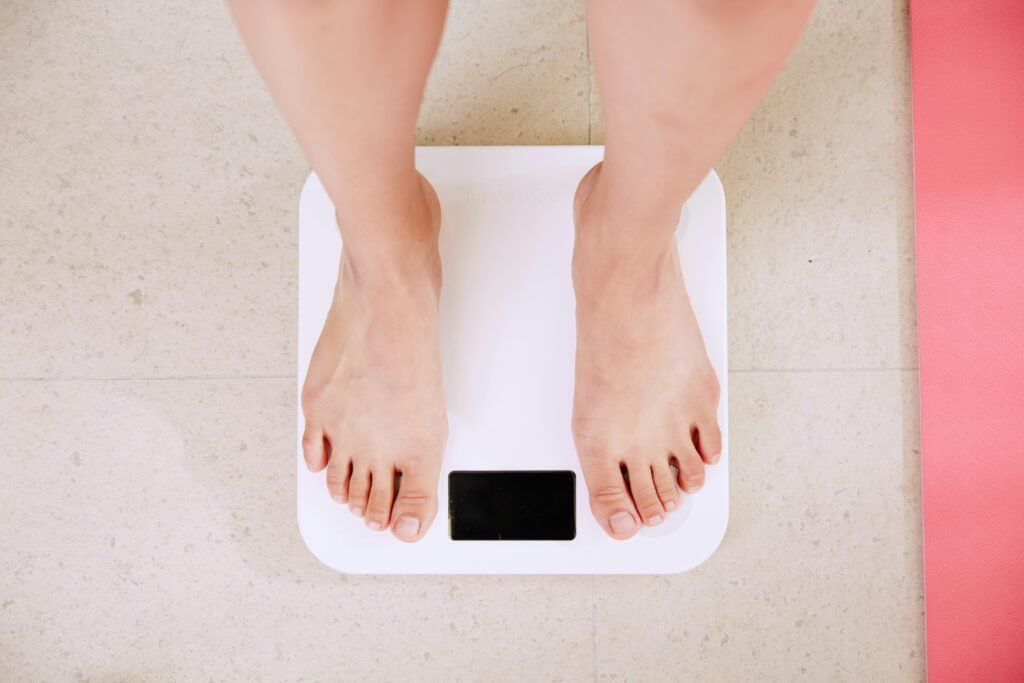The Ultimate Guide to Calorie Counting for Weight Loss
Are you looking to shed those extra pounds and live a healthier lifestyle? Look no further than “The Ultimate Guide to Calorie Counting for Weight Loss.” In this comprehensive guide, you will discover the power of calorie counting and how it can help you achieve your weight loss goals. With simple and practical tips, you will learn how to make informed food choices, portion control, and create a calorie deficit that promotes safe and sustainable weight loss. Say goodbye to fad diets and hello to a healthier you through the power of calorie counting!

This image is property of images.unsplash.com.
Understanding Calories
What are calories?
Calories are a unit of measurement used to quantify the energy content of food and beverages. When we consume food, our bodies break it down and convert it into energy to fuel our daily activities. This energy is measured in calories. Consuming an excess of calories leads to weight gain, while consuming fewer calories than needed results in weight loss.
How do calories relate to weight loss?
Weight loss occurs when you create a calorie deficit – that is, when you consume fewer calories than your body needs for daily activities. This deficit forces your body to tap into its stored fat reserves for energy, leading to gradual weight loss over time.
Understanding the calorie deficit
The concept of a calorie deficit is crucial for weight loss. To achieve a calorie deficit, you need to consume fewer calories than your body requires. This imbalance prompts your body to utilize its fat stores, promoting weight loss. It is generally recommended to aim for a safe and sustainable deficit of around 500-1000 calories per day for gradual weight loss.
Types of calories: protein, carbohydrates, and fats
Calories come from three main macronutrients: protein, carbohydrates, and fats. Each macronutrient provides a different number of calories per gram. Protein and carbohydrates contain 4 calories per gram, while fats contain 9 calories per gram. It is essential to incorporate a well-balanced mix of these macronutrients in your diet to support overall health and wellbeing.
Setting Calorie Goals
Determining your Basal Metabolic Rate (BMR)
Your Basal Metabolic Rate (BMR) is the number of calories your body needs at rest to perform vital functions like breathing and maintaining body temperature. Several factors, including age, gender, weight, height, and activity level, influence your BMR. Calculating your BMR provides a baseline estimate of the number of calories you need to maintain your current weight.
Calculating your Total Daily Energy Expenditure (TDEE)
Your Total Daily Energy Expenditure (TDEE) represents the total number of calories your body burns in a day, taking into account your BMR and the energy expended through physical activity. To calculate your TDEE accurately, you need to factor in your activity level and multiply your BMR by an activity factor. This calculation gives you an estimate of the number of calories you need to maintain your weight.
Determining your calorie deficit
Once you have determined your TDEE, you can set a calorie deficit goal based on your desired weight loss rate. As mentioned earlier, a safe and sustainable deficit is typically around 500-1000 calories per day. Gradual weight loss of 1-2 pounds per week is generally recommended for long-term success. It is crucial to ensure that your calorie deficit does not dip too low, as drastic restrictions can lead to nutrient deficiencies and metabolic slowdown.
Consulting with a healthcare professional
It is always recommended to consult with a healthcare professional, such as a registered dietitian or nutritionist, before embarking on a weight loss journey. They can help you understand your unique nutritional needs, provide personalized guidance, and ensure you are making safe and sustainable choices for your overall health.

This image is property of images.unsplash.com.
Tracking Calorie Intake
Food diary and journaling
One effective way to track calorie intake is by maintaining a food diary or journal. This involves writing down everything you eat and drink throughout the day, along with their corresponding calorie values. This practice not only helps you stay conscious of your choices but also allows you to identify potential areas for improvement and make necessary adjustments to meet your calorie goals.
Using smartphone apps or online tools
In the digital age, there is an abundance of smartphone apps and online tools available that can assist you in tracking your calorie intake. These applications often have extensive food databases and allow you to input your meals and snacks, automatically calculating the total calories consumed. Some apps even provide personalized recommendations and tracking features for added convenience.
Reading food labels and portion sizes
An essential skill in calorie counting is the ability to read and understand food labels. Food labels provide detailed information about the nutritional content of packaged foods, including calorie values. Paying attention to portion sizes is equally crucial, as consuming larger portions can lead to unintentional calorie overconsumption. Measuring cups, food scales, and visual cues can be helpful tools for portion control.
Considering hidden calories
When tracking calorie intake, it is essential to be aware of hidden calories that may be present in certain foods and beverages. Sauces, dressings, oils, sugary drinks, and even seemingly innocent snacks can contribute significant calories without you realizing. Being mindful of these hidden sources of calories can help you make informed choices and stay within your calorie goals.
Monitoring Calorie Output
Understanding different types of physical activities
Calories are not only burned through deliberate exercise routines but also through various non-exercise activities, known as Non-Exercise Activity Thermogenesis (NEAT). Understanding the different types of physical activities and their calorie-burning potential can help you make informed decisions about your daily movement.
Estimating calories burned during exercise
Estimating the number of calories burned during exercise can be challenging, as it depends on numerous factors such as duration, intensity, body weight, and fitness level. However, online calculators and fitness trackers can provide approximate calorie burn estimates based on these factors. It is important to remember that these estimates may not be 100% accurate, but they can serve as a useful guide.
Combining cardiovascular and strength training exercises
To maximize calorie burn and promote overall fitness, it is beneficial to combine cardiovascular exercises, such as jogging or cycling, with strength training exercises. While cardiovascular exercises primarily burn calories during the activity, strength training exercises build lean muscle mass, which can increase your resting metabolic rate and lead to long-term calorie burn even at rest.
Incorporating non-exercise activities
In addition to deliberate exercise, incorporating non-exercise activities into your daily routine can contribute to calorie burn. Simple actions like taking the stairs instead of the elevator, walking instead of driving short distances, or even standing instead of sitting can help increase your overall energy expenditure. These small changes add up over time and can have a positive impact on your calorie balance.

This image is property of images.unsplash.com.
Healthy Calorie Choices
Focusing on nutrient-dense foods
When aiming for weight loss, it is important to focus on nutrient-dense foods that provide the essential vitamins, minerals, and macronutrients your body needs. These include fruits, vegetables, lean proteins, whole grains, and healthy fats. Choosing nutrient-dense options allows you to satisfy your hunger while maintaining a lower calorie intake.
Incorporating fruits and vegetables
Fruits and vegetables are excellent choices for weight loss because they are generally low in calories while being high in fiber, water content, and essential nutrients. These elements help promote feelings of fullness and satiety, reducing the likelihood of overeating and aiding in weight loss efforts.
Choosing lean proteins
Proteins are an important component of a weight loss diet as they contribute to feelings of fullness and help preserve lean muscle mass. To keep calorie intake in check, opt for lean protein sources such as skinless poultry, fish, legumes, and tofu. These choices provide high-quality protein without excessive fat and calorie content.
Opting for whole grains
When incorporating carbohydrates into your meals, choosing whole grains over refined grains is a wise choice. Whole grains contain more fiber, which aids digestion, helps regulate blood sugar levels, and promotes feelings of fullness. Examples of whole grains include brown rice, whole wheat bread, quinoa, and oats.
Dealing with Challenges
Overcoming emotional eating
Emotional eating can pose a challenge when trying to maintain a calorie deficit. Stress, boredom, and other emotions can trigger the desire to consume high-calorie comfort foods. To overcome emotional eating, it is important to identify the triggers and develop alternative coping mechanisms. Strategies such as engaging in stress-relieving activities, seeking support from loved ones, and practicing mindful eating can help break the cycle of emotional eating.
Managing social situations
Social situations often involve food, which can make it difficult to stick to your calorie goals. However, there are ways to manage social situations while still making healthy choices. Communicating your goals and needs to friends and family can help ease potential pressure. Additionally, opting for healthier options, practicing portion control, and focusing on enjoying the company rather than solely on the food can help navigate these situations successfully.
Coping with cravings
Cravings for high-calorie foods are common, especially when restricting calorie intake. Instead of completely depriving yourself, it is important to find a balance. Allow yourself occasional treats in moderation, focusing on portion control and savoring the flavors. Additionally, distracting yourself with other activities, practicing mindful eating, and ensuring you are properly hydrated can help reduce the intensity and frequency of cravings.
Avoiding drastic calorie restriction
While it may be tempting to drastically restrict calorie intake for quick weight loss, this approach is neither sustainable nor healthy. Severe caloric restrictions can result in nutrient deficiencies, metabolic slowdown, and can lead to feelings of deprivation, ultimately derailing your weight loss efforts. It is important to choose a moderate and sustainable calorie deficit that promotes long-term success and overall well-being.
Meal Planning and Preparation
Creating a calorie-conscious meal plan
Meal planning is a valuable tool for calorie counting and weight loss. By creating a meal plan, you can carefully choose nutrient-rich foods that fit within your calorie goals. Planning your meals ahead of time also helps prevent impulsive food choices and allows for more accurate tracking of calorie intake.
Managing portion sizes
Controlling portion sizes is crucial for successful calorie counting. Even nutritious foods can contribute to weight gain if consumed in excessive amounts. Using measuring cups, food scales, and visual aids can help ensure you are eating appropriate portion sizes. Over time, you may develop a better sense of portion control, making it easier to maintain a healthy calorie balance.
Meal prepping and batch cooking
Meal prepping and batch cooking can save time and energy while supporting your calorie counting efforts. Preparing larger quantities of meals in advance allows you to portion out meals and have them readily available throughout the week. This reduces the likelihood of resorting to unhealthy convenience options and helps you stay on track with your calorie goals.
Incorporating flexibility and variety
While meal planning and preparation are beneficial, it is important to maintain flexibility and variety in your diet. Include a diverse range of foods to ensure you are getting all the necessary nutrients and to prevent monotony. Trying new recipes, experimenting with different cooking techniques, and incorporating seasonal produce can help keep your meals exciting and enjoyable.
Long-Term Sustainability
Adopting a gradual and realistic approach
To make calorie counting a sustainable lifestyle change, it is important to adopt a gradual and realistic approach. Setting unrealistic goals or striving for rapid weight loss can lead to burnout and eventual weight regain. Embrace the idea that sustainable weight loss takes time and requires patience, consistency, and commitment.
Building healthy habits
Successful weight loss involves more than just counting calories – it also requires the development of healthy habits. Focus on incorporating regular physical activity, practicing mindful eating, staying hydrated, getting sufficient sleep, and managing stress. These habits reinforce a healthy lifestyle and contribute to long-term weight management.
Adapting calorie counting to your lifestyle
While calorie counting is an effective weight loss method, it is important to adapt it to your unique lifestyle and preferences. Choose tracking methods that work for you, whether it’s using smartphone apps, keeping a food diary, or utilizing online tools. Finding a system that fits seamlessly into your routine increases the likelihood of long-term adherence.
Tracking progress and making adjustments
Regularly monitoring your progress is essential for staying on track and making necessary adjustments. Keep track of your weight, measurements, and how you feel both physically and mentally. If needed, consult with a healthcare professional to reassess your calorie goals and make adjustments based on your progress. Remember, weight loss is a dynamic process that may require modifications along the way.
Seeking Professional Guidance
Working with a registered dietitian or nutritionist
For personalized guidance and support on your weight loss journey, consider working with a registered dietitian or nutritionist. These professionals can help you develop a tailored calorie counting plan that takes into account your individual needs, goals, and dietary preferences. They can also provide accurate nutritional information, assist with meal planning, and offer strategies to overcome challenges.
Addressing potential nutrient deficiencies
Restricting calorie intake, especially if done improperly, can increase the risk of nutrient deficiencies. A healthcare professional can assess your nutrient needs and recommend appropriate dietary adjustments or supplementation if necessary. It is vital to prioritize your overall health and ensure you are meeting your nutritional requirements while striving for weight loss.
Considering specific dietary needs or restrictions
Individuals with specific dietary needs or restrictions, such as food allergies, intolerances, or medical conditions, may require additional guidance when calorie counting for weight loss. Consulting with a healthcare professional can help ensure you are meeting your unique dietary requirements while still achieving your weight loss goals safely and effectively.
Evaluating long-term health effects
While calorie counting can assist with initial weight loss, it is crucial to evaluate the long-term health effects of any weight loss approach. Rapid or extreme weight loss methods can negatively impact your metabolism, muscle mass, and overall health. A healthcare professional can help assess the potential risks and benefits of your chosen weight loss strategy and guide you towards a safe and sustainable approach.
Maintaining Weight Loss
Transitioning to weight maintenance
Once you have achieved your weight loss goal, transitioning to weight maintenance is an important next step. This involves adjusting your calorie intake to match your new energy needs without causing weight regain. Gradually increasing your calorie intake while monitoring your weight can help you find the balance that allows for long-term weight maintenance.
Staying mindful of calorie intake
While weight maintenance may not require the same level of calorie restriction as weight loss, it is important to remain conscious of your calorie intake. Continuing to track your calories or practicing mindful eating can help prevent gradual weight gain. Regular check-ins and adjustments to your eating habits can ensure that you are still making choices that align with your health and wellness goals.
Continuing regular physical activity
Physical activity remains a crucial component of weight maintenance. Regular exercise not only helps burn calories but also supports overall health, metabolism, and muscle maintenance. Aim for a combination of cardiovascular exercises, strength training, and non-exercise activities to promote energy expenditure and maintain your weight loss success.
Monitoring and adjusting calorie goals
Even in weight maintenance, it may be necessary to periodically reassess your calorie goals based on changes in activity level, age, or other factors. Regularly monitoring your weight and being mindful of any changes can prompt you to make small adjustments to your calorie intake if needed. Maintaining awareness of your body’s needs and adapting your calorie goals accordingly supports long-term weight management.
Calorie counting can be an effective tool for weight loss when approached with knowledge, consistency, and a focus on overall health. By understanding the connection between calories and weight loss, setting appropriate calorie goals, tracking intake and output, making healthy food choices, overcoming challenges, and seeking professional guidance when necessary, you can embark on a successful weight loss journey that is sustainable and enjoyable. Remember, everyone’s weight loss journey is unique, and what works for one person may not work for another. It is important to find an approach that suits your individual needs and preferences for long-term success.



